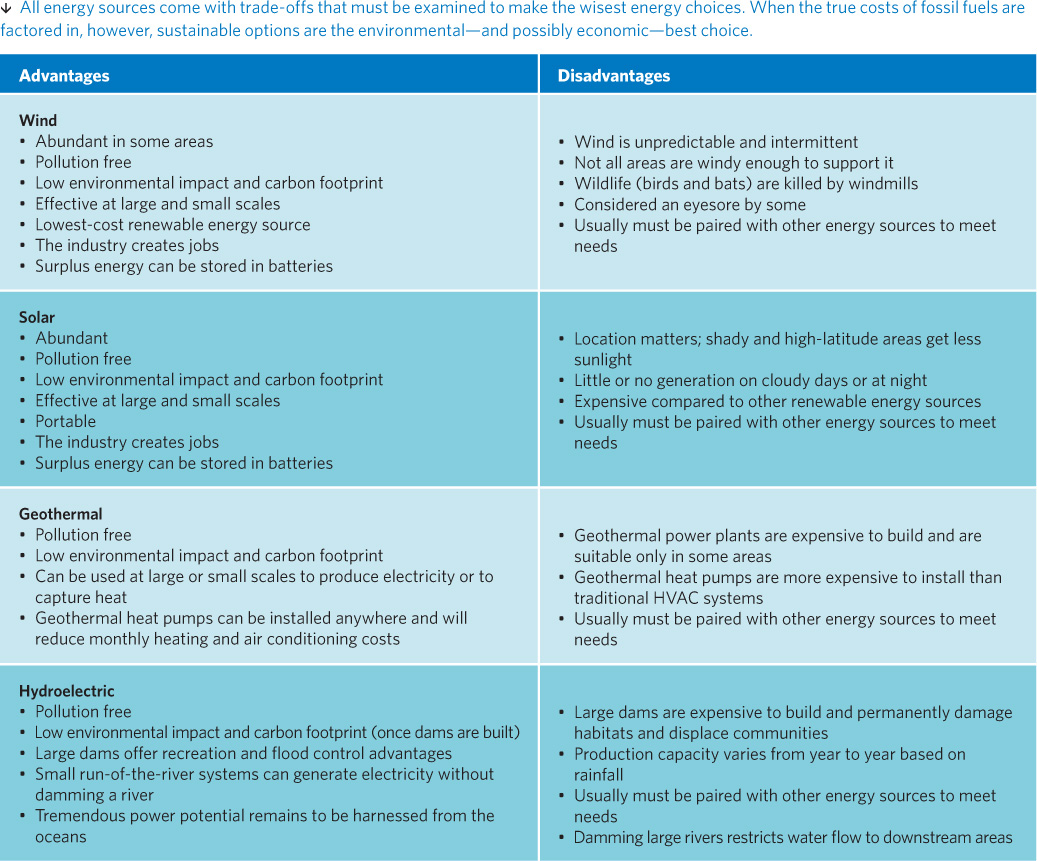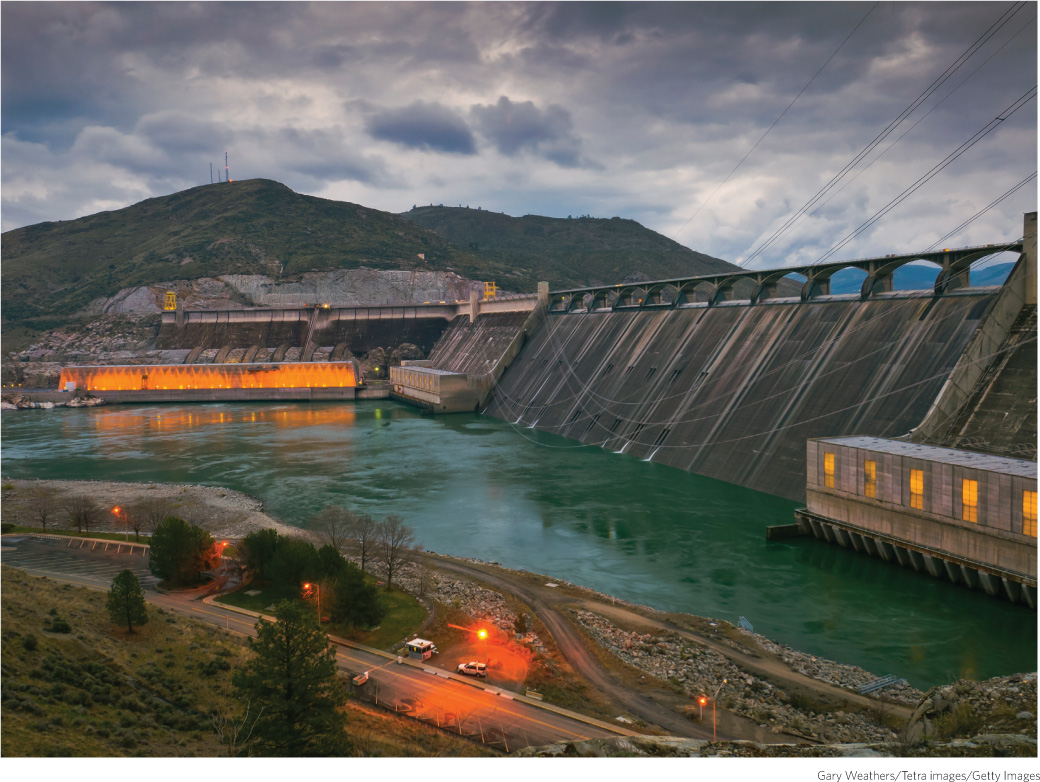The true cost of various energy technologies can be difficult to estimate.
One recurring theme with renewable energy technologies is that they are more expensive than fossil fuel methods. Even though sunlight, wind, geothermal heat, and water are free, constructing and installing the solar cells, wind turbines, underground pipes, and hydroelectric systems needed to harness their energy are not.
But perhaps we should not be asking why renewables are so expensive but instead asking why fossil fuels are so cheap. We need to consider all the costs—environmental, social, and economic—of these technologies to fairly compare them. Even if the costs to construct and install a technology are high, those costs might be offset by the lower environmental and health costs of the sustainable technology. This makes comparisons between the energy technologies difficult. Various studies have tried and so far agree on several points: Fossil fuels, led by coal, have the highest external (environmental) costs. Purely from an economic standpoint, solar energy is the most expensive form of energy. Finally, when external costs are added to production costs to estimate a true cost per kilowatt-hour, wind leads the way as the least expensive method. (For a look at the trade-offs of biofuels, see LaunchPad Chapter 32.) TABLE 23.1
THE TRADE-OFFS OF RENEWABLE ENERGY SOURCES


Consider the area where you live. What mix of renewable energy sources would work best for your community?
Answers will vary but should be supported.
It was this logic that helped convince the people of Samsø to personally invest in the ambitious project to convert to 100% sustainable energy. Such a project would not be possible everywhere, says Hermansen. Indeed, he wasn’t even sure at first it would succeed because it needed the buy-in of every one of the island’s 4,000-plus residents—literally. The only way the project would work, he and others believed, was if it was owned by the people. For years, Hermansen and others had to go practically door to door, trying to convince everyone to become part owners in the island’s sustainable energy infrastructure. “If we didn’t own these wind turbines and other sustainable energy projects on Samsø, a big power company would,” says Hermansen. “Eventually, people will get their money back.”
462
463
KEY CONCEPT 23.7
Renewable energy sources may be more expensive to use but only if the true costs of using fossil fuels are ignored.
At first, the islanders were skeptical. “People were a little scared in the beginning. They were afraid the changes would disturb the landscape and affect tourism,” says Garbers. But attitudes slowly changed, thanks largely to Hermansen’s efforts.
Hermansen was born on Samsø and grew up there on a family farm. He was an environmental studies teacher with an enthusiasm for all things renewable when he heard about the contest, and it wasn’t long before he became the project’s first employee. Through extensive community meetings and seminars, he rallied the islanders to the cause. “We are lucky to have him,” says Garbers. “If it had been some guy from the mainland promoting the project, maybe the islanders wouldn’t have believed him. But Søren was local.” This constellation of forces—a small, close-knit community open to the project, community members who personally invested in the venture, led by a local individual with a passion for sustainability—helped Samsø achieve its goal.
464

By now, most of Samsø’s residents have invested, starting at around $600 for 1 share in a wind turbine. The logic, says Hermansen, is that all residents share the profits. In a good wind year, the island sells its excess electricity, and people who purchased 10 shares receive 10 shares’ worth of profits. He estimates that each Samsø resident has invested an average of $20,000 over the past 10 years in revolutionizing electricity on the island.